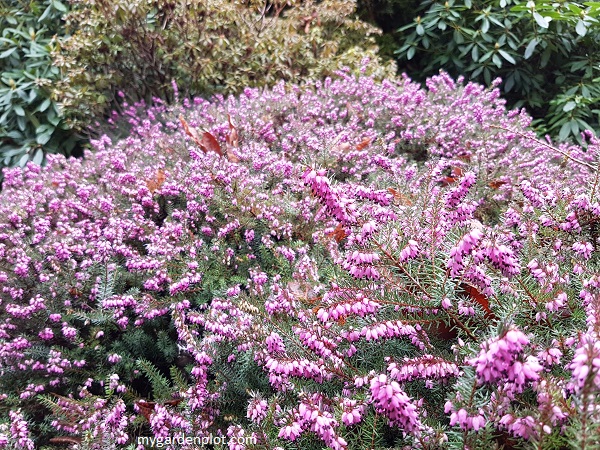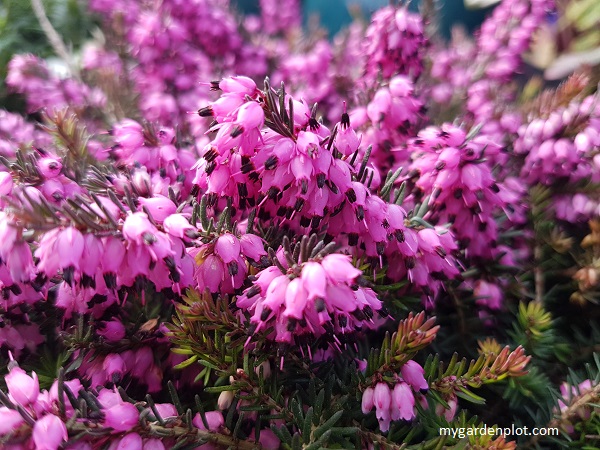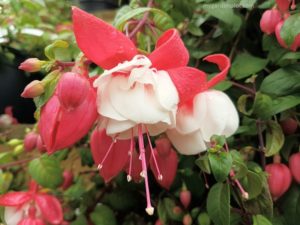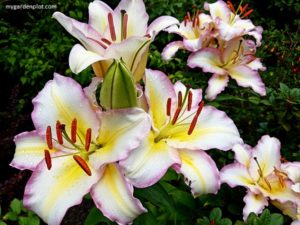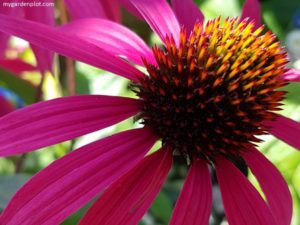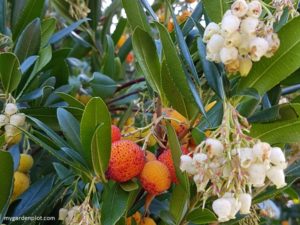About Heather And Heath Flowering Shrubs
Associated with the wide, open spaces in the British moorlands and found throughout Europe, the versatile heather is found in many gardens in the Pacific Northwest – flowering nearly year-round and valued for adding colour in a winter garden and exposed windy sites. Generally, ‘heather’ is the umbrella term for heather and heath. The following guide will help understand the difference between these plants and make the most of this low-growing evergreen shrub in the garden. Below find information on where to plant and how to grow and prune your heather and heath shrubs.
Heather can also be used with container gardening, either on their own or grouped. And because of their long flowering seasons, they can add colour to your garden.
Difference Between Calluna (Heathers) And Erica (Heaths)
The most popular ‘heather’ is actually a heath. But heath is not botanically a heather. Whaaat? So what’s the difference between heather and heath?
The word ‘heather’ has been widely adopted when speaking about either heather or heath. They look so similar. But strictly speaking, heather refers to the hardy genus Calluna. It is also known as Scots heather, Scottish heather, Scotch heather and ling heather. Heath refers to the genus Erica, of which there are more than 700 species plus many varieties. Most are frost tender, but a few are hardy and very suitable for the Pacific Northwest. Heaths are also referred to as Winter heath and alpine heath. Coincidently there is only one species of heather, C. vulgaris, but many varieties available.
One distinct visual difference is the shape of the leaf. The heather leaf is more scale-like, while the heath leaf is more needle shape (see photo comparison below).
Flowering times vary too between heather and heath. Generally, the genus Calluna (heather) blooms mostly from mid-summer and throughout early autumn. In comparison, the genus Erica (heath) blooms mainly from winter to spring.
But does any of this matter? Not really to average gardeners like me. Heathers and heaths are low maintenance, evergreen, acid-loving plants. They combine well in a garden. And if you have a wide area to plant both heathers and heaths, this offers a colourful carpet of mounds flowering at different times of the year.
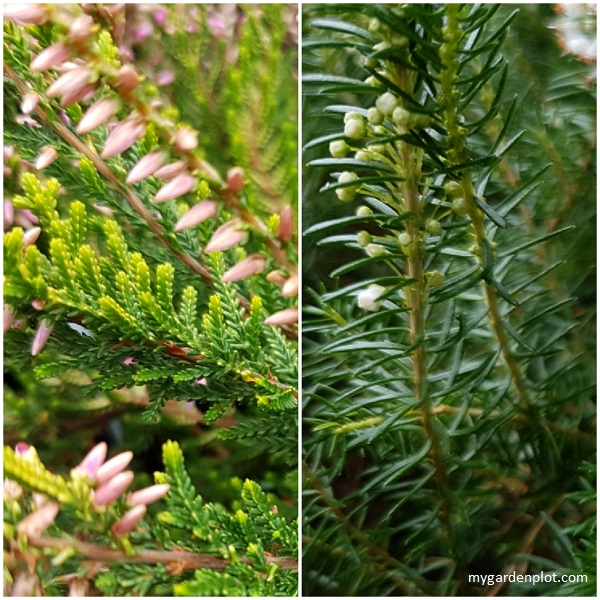
Popular Heath Species And Varieties
The most popular heather varieties are from the cultivar Erica Carnea. There are many types to choose from at the garden centre. Some of the most popular are E. Carnea ‘Springwood White’ with white flowers and the ‘Springwood Pink’ with light pink flowers.
The E. x darleyensis ‘Mediterranean Pink’ is also a popular choice with its pink-lavender spring flowers. Our favourite is the E. x darleyensis ‘Kramer’s Red’ with stunning, pink flowers that brighten dull late-winter days. The natural mounding growth habit makes them ideal as a groundcover, certainly bringing colour to pathways and mixed borders. Plus, they are one of the easiest of heaths to grow and very good for suppressing weeds.
RELATED TOPIC: How To Remove And Prevent Weeds
Daboecia cantabrica (St Dabeoc’s Heath, Irish Bell Heather, Irish Heath)
There is a third genus, Daboecia, that often accompanies Calluna (Heather) and Erica (Heath) using the general term ‘heather’, and its relation to the genus Erica. Daboecia cantabrica, also known as St Dabeoc’s heath, Irish bell heather or Irish heath, is an evergreen, long-flowering small shrub similar to heather and heath. It flowers summer through to autumn until the first frost. Daboecia is easy to care for and enjoys similar sunny and soil conditions as heather and heath. Suitable for zones 7 – 9.
SEE MORE: How To Grow Daboecia cantabrica
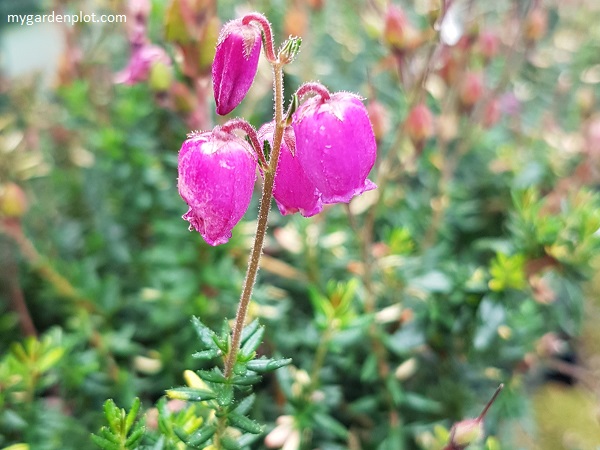
Heather And Heath At A Glance
Type: Evergreen Shrub
Location: Full Sun
Flowering Interest: Heather (mid-summer to early autumn); Heath (late winter to spring, some start blooming as soon as late autumn)
When To Prune: Trim After Flowering (either late winter or early spring)
Size: Varies –up to 50 cm (20 inches) in height and 90 cm (35 inches) in spread
Plant Hardiness Zones: 5 – 9
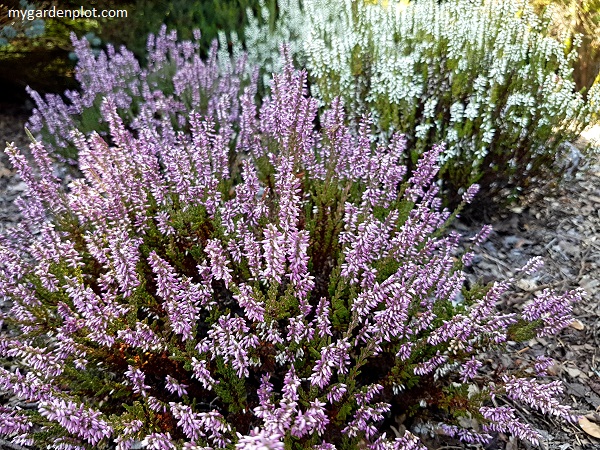
Where To Plant And How To Grow Heather
Heathers and heaths thrive in our cool summers planted in a location that receives full sun.
They need acidic, well-drained soil but tolerate average alkaline soil conditions. Adding peat moss when planting the heather or heath helps retain moisture and will permit good drainage during winter. Heathers and heaths do not like excessive water at their roots.
Refrain from overfertilizing but ensure it is watered regularly until it is established. Adding mulch in spring will help conserve moisture in summer and keep their roots cool in scorching sites.
How To Prune Heather And Heath
Heathers and heaths benefit from a light prune to keep tidy and improve blooming. Using pruning shears or hand pruners, trim off about 2.5 cm (1 inch) after it flowers and before the new growth begins. Remove any damaged growth.
Older or neglected heathers and heaths may become woody and lose their vigour. At this stage, not much can be done but to replace them.
RELATED TOPIC: Buyer’s Guide On How To Choose Hand Pruners (Secateurs)
Pests And Problems That Affect Heather And Heath
Heathers and heath are usually trouble-free and deer resistant.
